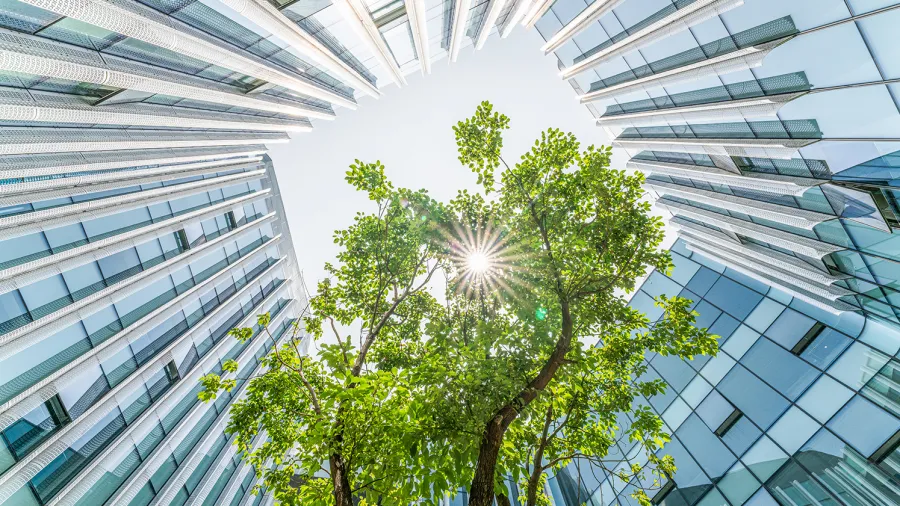
KPMG answers 5 FAQs on SG Carbon Tax
Some of the questions were about the tax rate and scope.
Singapore will announce its revised carbon tax rate at the upcoming Budget 2022. Professional services firm KPMG answered five frequently asked questions (FAQs) regarding the topic.
Who pays the bill for carbon tax?
According to the head of tax Ajay Kumar Sanganeria, carbon taxes are often passed onto consumers through increasing commodity prices, such as electricity, fuel and transport, as seen in many countries.
"Up until now, Singapore's carbon tax has impacted a small number of very large carbon emitters and was deliberately set at an introductory rate to give taxpayers time to adapt. With Singapore committed to meeting ambitious climate targets over the next decade, the Government has acknowledged that more needs to be done. One of the measures that will be considered in Budget 2022 is an increase in the current carbon tax rate and a broadening of the scope of the taxation to cover a larger number of facilities," he added.
Is Singapore's carbon tax rate of $5 per tonne enough to change behaviour?
"A sharp increase in Singapore's carbon tax rate could be counter-productive in the short term and may even hinder broader economic progress, given the increased costs for both businesses and consumers that it would bring. A gradual rise is therefore more likely though taxation alone is unlikely to bring about a big enough reduction in emissions. Where Singapore can look to differentiate itself from other countries is through combining increased carbon taxes with incentives and support for businesses that invest in environmental, social and governance (ESG) initiatives and switch to greener alternatives," remarked energy & natural resources tax partner Mark Addy.
What might happen if there are revisions to the carbon tax rate or scope? (Addy)
Carbon tax currently does not apply to land transport fuels as such fuels are already subject to excise duties. As any additional taxes are expected to be passed onto the consumer in the form of more expensive vehicle fuel rates, we do not anticipate the carbon tax being expanded to cover this. Instead, the authorities will likely continue to encourage the use of electric vehicles and ramp up the related infrastructure.
One area to watch is how much the government will adjust the emissions threshold for carbon tax purposes. The emissions threshold is currently set at 25,000 tCO2e per year – which is a level that only affects larger facilities. If this threshold is reduced, many smaller manufacturing facilities (including those producing essential goods) could come under the scope of carbon taxes, and there may be a knock-on effect on the price of everyday products.
Singapore will be mindful of the fact that many countries in Asia have not yet introduced carbon taxes or carbon pricing measures, hence a significant increase could impact its regional competitiveness. However, the global movement to address climate change as an urgent priority means that all companies will eventually need to switch to low or no-carbon solutions, irrespective of where they are located. A mass exodus of manufacturing activities from Singapore in the short term is therefore unlikely.
Carbon tax vs carbon trading – what's the difference? (Sanganeria)
Both carbon taxes and the emissions trading systems (ETS) are used as a means of bringing down emissions and driving investments into cleaner energy options.
Carbon tax sets a price on carbon by defining a specific rate on either greenhouse gas emissions or the actual carbon content of such emissions. This pre-defines the price of carbon but typically does not set a cap on total emissions. An ETS, as seen in the EU, is usually in the form of a cap-and-trade system. This sets a cap on the total greenhouse gas emissions and allows the trading of allowances, or "carbon credits", between emitters. It effectively allows the market to determine the price of carbon emissions.
Does an increase in carbon tax mean that Singapore will lower other taxes? (Sanganeria)
Environmental taxes are generally introduced as a mechanism to change the behaviour of taxpayers, rather than with specific revenue collection targets in mind. This coupled with the fact that the Government will need to start to recoup some of its pandemic-related expenditure, means we are unlikely to see a lowering of other taxes to offset the impact of increasing carbon taxes. The ultimate hope is that the carbon tax rate will eventually reach a point where it becomes more cost-effective for emitters to switch to more energy-efficient solutions.
That said, to cushion the impact on consumers in the short term, the Government may look at introducing subsidies for lower-income households to cope with increasing electricity prices. Authorities could also introduce vouchers or incentives that make it more affordable for families to purchase energy-efficient appliances.

![SBR 5 Lorem Ipsum News 2 [8 May]](https://cmg-qa.s3.ap-southeast-1.amazonaws.com/s3fs-public/styles/exclusive_featured_article/public/2025-05/a_hand_pointing_to_a_futuristic_technology_5b87c9d0e3_3.png.webp?itok=M3Hf-9XR)
![SBR 4 Lorem Ipsum [8 May Top Stories]](https://cmg-qa.s3.ap-southeast-1.amazonaws.com/s3fs-public/styles/exclusive_featured_article/public/2025-05/a_hand_pointing_to_a_futuristic_technology_5b87c9d0e3_2.png.webp?itok=2m5Wl0MX)


![Exclusive three SBR 12 Lorem Ipsum [8 May]](https://cmg-qa.s3.ap-southeast-1.amazonaws.com/s3fs-public/styles/exclusive_featured_article/public/2025-05/a_hand_pointing_to_a_futuristic_technology_5b87c9d0e3_11.png.webp?itok=8kn_UIfA)
![SBR 3 Lorem Ipsum [ Exclusive 2]](https://cmg-qa.s3.ap-southeast-1.amazonaws.com/s3fs-public/styles/exclusive_featured_article/public/2025-05/a_hand_pointing_to_a_futuristic_technology_5b87c9d0e3_1.png.webp?itok=YCyjLegJ)
![SBR 2 Lorem Ipsum [8 May]](https://cmg-qa.s3.ap-southeast-1.amazonaws.com/s3fs-public/styles/exclusive_featured_article/public/2025-05/a_hand_pointing_to_a_futuristic_technology_5b87c9d0e3_0.png.webp?itok=_cKD-29o)

![Video [Event News]](https://cmg-qa.s3.ap-southeast-1.amazonaws.com/s3fs-public/styles/event_news_featured_article/public/2025-05/screenshot-2025-05-08-at-4.58.53-pm_0.png.webp?itok=Kud35sMs)
![Event News SBR 9 Lorem Ipsum [8 may]](https://cmg-qa.s3.ap-southeast-1.amazonaws.com/s3fs-public/styles/event_news_thumbnail/public/2025-05/a_hand_pointing_to_a_futuristic_technology_5b87c9d0e3_8.png.webp?itok=DTh_dbYp)
![Event News SBR 9 Lorem Ipsum [8 May]](https://cmg-qa.s3.ap-southeast-1.amazonaws.com/s3fs-public/styles/event_news_thumbnail/public/2025-05/a_hand_pointing_to_a_futuristic_technology_5b87c9d0e3_7.png.webp?itok=vzDAzb6V)
![Event News SBR 8 Lorem Ipsum [8 May]](https://cmg-qa.s3.ap-southeast-1.amazonaws.com/s3fs-public/styles/event_news_thumbnail/public/2025-05/a_hand_pointing_to_a_futuristic_technology_5b87c9d0e3_6.png.webp?itok=jvHFc4P6)
![Video [Event News]](https://cmg-qa.s3.ap-southeast-1.amazonaws.com/s3fs-public/styles/video_thumbnail/public/2025-05/screenshot-2025-05-08-at-4.58.53-pm_0.png.webp?itok=yZnI0YBb)
![Video 1 SBR [8 May]](https://cmg-qa.s3.ap-southeast-1.amazonaws.com/s3fs-public/styles/video_thumbnail/public/2025-05/screenshot-2025-05-08-at-4.58.53-pm.png.webp?itok=9AAeRz_k)

 Advertise
Advertise

